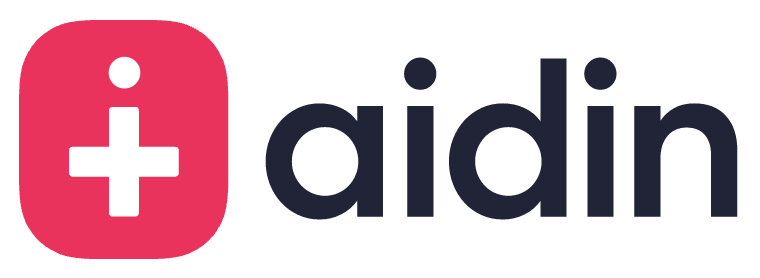 There are so many forms of fragmentation in our system, where do you start? Even tech behemoths like Google and Amazon struggle to find their footing in the healthcare maze.
There are so many forms of fragmentation in our system, where do you start? Even tech behemoths like Google and Amazon struggle to find their footing in the healthcare maze.
Just ask Lisa Graham. She’s the director of integrated care management and quality at The Ohio State University Comprehensive Cancer Center-James Cancer Hospital and Solove Research Institute.
“The fragmentation of communication across our post-acute care continuum and our payers is a huge barrier to care,” she said.
The lack of common information technology and workflow structures among different providers makes communication and care coordination difficult. The growth of electronic medical records hasn’t led to dynamic exchange and collaboration, a problem that is getting worse over time rather than better.
We recently brought together Lisa and two other innovative thought leaders in care coordination at large health systems: Marcia Colone, vice president of care coordination and transition management at Vanderbilt University Medical Center; and Paul Arias, assistant vice president of care coordination at Loma Linda University Health System.
I’ve known Marcia for eight years, Lisa for three and started working with Paul in January. They are some of the smartest healthcare executive leaders I’ve worked with — innovative and creative, persuasive and visionary. Their careers are a tribute to their successes improving the front line patient experience while reducing readmissions and length of stay, improving staff quality of life and efficiency, and optimizing essential processes to guarantee better patient outcomes. I’ve had the honor of working shoulder-to-shoulder with Lisa, Marcia and Paul to create a new incentive-aligned way of interacting with payors, post-acute providers, physicians, and more. It’s called Aidin.
Below are the first-hand insights Lisa, Marcia and Paul shared in our recent conversation. You’ll see why I’ve fielded 10 requests this week for introductions to these inspiring leaders.
- Technology doesn’t work — unless you think of it as your business partner. Often, we think technology should solve technology issues, when it should solve much more. To turn technology from a headache into an asset and a timesaver, you have to have a vision for it.Every panelist spoke to how they’re using tech to fulfill a new vision or solution. Marcia explicitly said every workflow needs reinforcement and consistent training to ensure staff are clear on repeatable, reportable workflows. Lisa’s organization at Ohio State reduced their average length of stay by 0.86 days by implementing technology that aligns with her vision because it rewards responsive, quality community providers for their partnership — aligning incentives and goals. Paul spoke to a myriad of technologies that he is intertwining to enable his staff to track their patients from admission to discharge to the end of their wraparound post-discharge services.Marcia best summed up this point: “Technology needs to be combined with strong leadership, strong and educated staff, and clear consistent workflows that everyone follows.”
- Data drives improvement and innovation. Marcia likes to track everything: The time it takes to start a post-acute referral after admission. The time it takes to give patients a list of their post-acute options, and the time from patient choice to discharge. She uses these reports to educate her executive team because, as she said, “the organization is expecting patients to be discharged.”Loma Linda extends its data collection beyond the walls of its hospitals to prevent readmissions. The system sends patients home with remote-monitoring technologies to track blood pressure, weight and other key health metrics. The remote monitoring can last as long as 90 days. The organization also uses health coaches to empower patients to get more engaged with their health and wellness. For Paul, it’s the combination of technology and human touch that supports efficient and effective post-acute care management.Related to patient engagement, OSU has developed a tool to help patients understand what they need to know to go home safely, Lisa said. The goal is to have patients as involved in the discharge process as their case managers.
- Want more meaningful relationships with post-acute providers? Increase transparency. Under value-based payment models, providers are an extension of a hospital’s care delivery model. Their performance has direct implications for the hospital’s reputation and bottom line. Yet, acute and post-acute providers still operate in silos. Our panelists are changing the paradigm by collaborating on shared standardized workflows and deadlines and securing easy access to electronic health record information. They are also sharing real-time data about denial rates, patient choice patterns and decision factors, and quality metrics to hold providers accountable and incentivize performance. “We can have meaningful conversations about where there are opportunities to improve,” Lisa said.
- Our aging population is upending traditional models of care. Case managers’ top priority has always been determining the appropriate level of care for patients. It’s a tricky balance involving several stakeholders based on the complexity of the patient’s condition and the type of needed services. The selection of patients for rehabilitation, and the timing of transfer from acute care, are important clinical decisions that impact care quality and patient flow.“We have to get the level of care correct,” Marcia said. “We lose when we send patients to a place that might not have the level of service they need.”Paul explained that Loma Linda has inserted “triggers’ into its electronic health record that are based on evidence-based guidelines, which also are used to support decisions with insurers. Vanderbilt is developing a new model of care coordination that involves training case managers to be more engaged with physician partners and the rest of the clinical staff. It’s not an easy transition if you have a staff that is more task oriented and accepts what the clinical team wants versus being willing to provide input into the discharge plan. Reaching consensus internally for each patient can be emotional and time consuming.
Aidin’s vision is a healthcare ecosystem where every patient transitions on-time to the best quality provider — every time. We’re helping healthcare leaders unleash the full potential of technology and the competitive power of the market to turn everyday tasks like referrals and prior authorizations into opportunities to align incentives, measure outcomes and celebrate proven results with your mission critical healthcare partners.
If you’d like to learn more about our mission and vision, visit myAidin.com and hear the details of the success stories we cherish.

